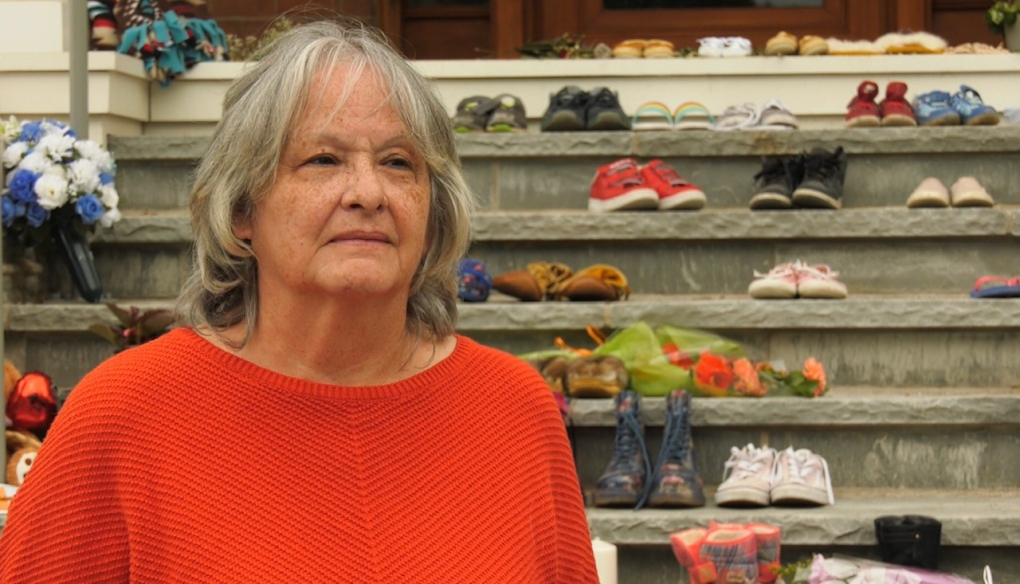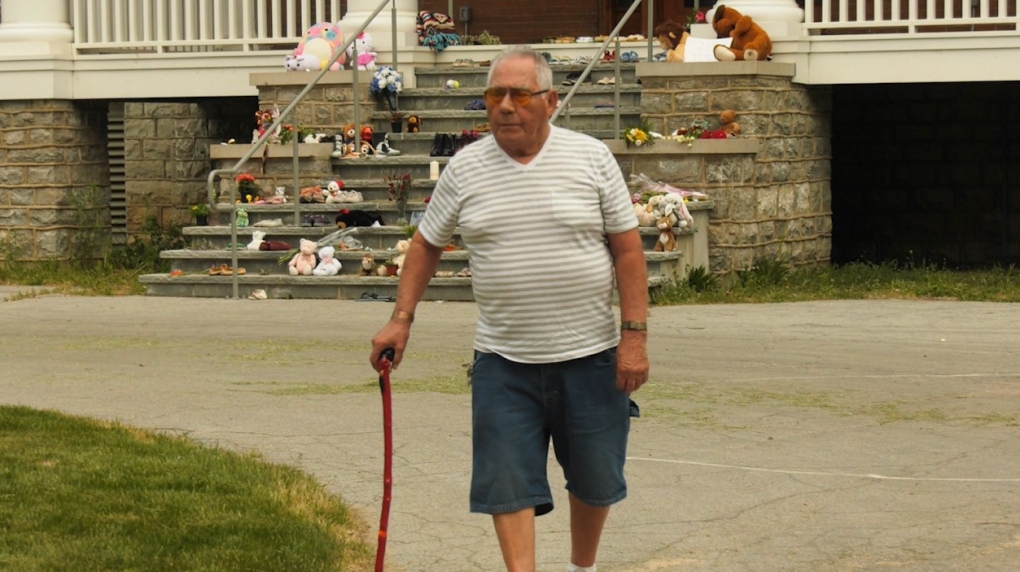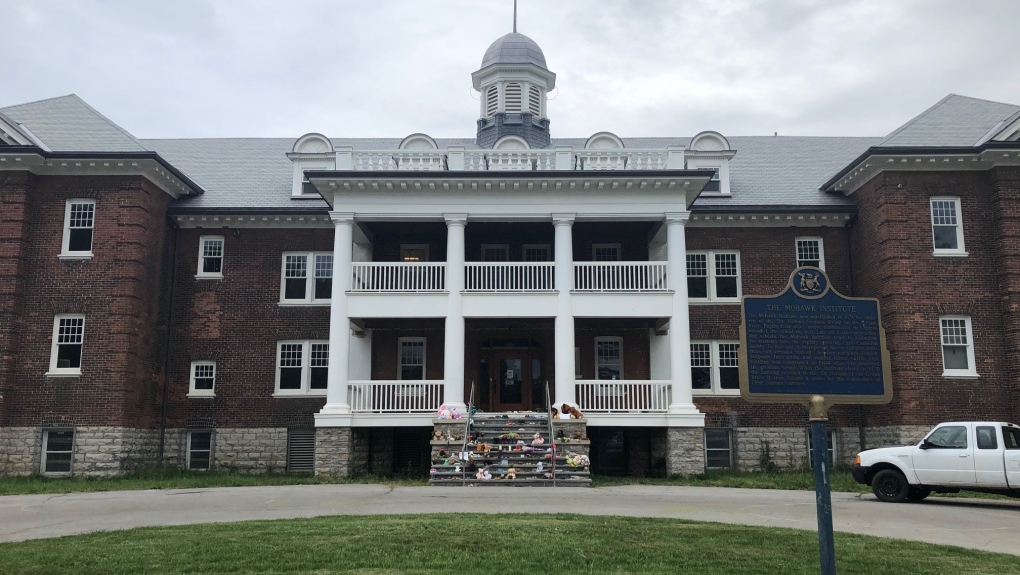'We need to know': Calls grow for former Ontario residential school site to be searched for possible remains
Next to where there was once a fire escape, names are etched into bricks.
They are the names of children who were removed from their families and forced to attend Mohawk Institute, a former residential school in Brantford, Ontario.
Roberta Hill was taken here when she was six years old. She vividly remembers the isolation and abuse, and never lived with her mother again.
It’s believed some children never made it out of the school alive.

“I was here 1957 to 1961. The stories have always been here,” Hill said. “Stories of children being buried here on-site or close by.”
Survivor John Elliott’s time at the school dates back to the 1940s when he too heard stories about burial grounds at a nearby farm and behind the school. He said he feels lucky to have escaped after attempting to run away more than 25 times.
“They would pick me up and bring me back. They used to have a bench and they’d put you over that and pull your pants down and give you a strapping … until they got tired,” Elliott said.

In the nearby Six Nations of the Grand River, Chief Mark Hill said everyone in his community is impacted by the legacy of the school.
In a letter to the Prime Minister, he’s calling for assistance to search the site for possible remains and to document, honour the dead, and criminally investigate.
“We need to look at the seriousness of this and that’s where our community is coming from, in looking to research not just the grounds, but any other areas in terms of school survivor stories, experiences, all of those pieces,” Hill told CTV News Toronto.
Mohawk Institute opened in 1831 and didn’t close until almost 140 years later in 1970. It’s now the Woodland Cultural Centre, a community organization ready to support a search if that’s what the community wants.

“The conversation is happening right now and it seems to be that will be the call to action,” said Janis Monture, executive director.
“We have done some work already on our site, approximately five acres on the girls’ side of the property has gone under stage three of an archeological assessment. We have done some ground penetration technology already,” she continued.
For many survivors, the search for possible children's remains at the site matters. It’s about answers, to grieve and to heal.
“Now this is coming out after so many years. I think it should be done,” said Elliott. “It means a lot to me.”
“I think we need to know,” said Hill. ”There are residential school kids that say, ‘yeah somebody died here.’ Let’s look in those areas.”
CTVNews.ca Top Stories

'Hell on earth': Ottawa rapper TwoTiime among Canadians displaced by L.A. fires
Ottawa rapper Khalid Omar, who performs under the name TwoTiime, was forced to evacuate his Calabasas condo as wildfires tore through the Los Angeles area this week, leaving the studio where he records in ruins.
16 dead, 16 missing as fire crews try to corral Los Angeles blazes before winds return this week
The death toll from the wildfires ravaging the Los Angeles area rose to 16 as crews battled to cut off the spreading blazes before potentially strong winds return that could push the flames toward some of the city's most famous landmarks.
Alberta premier Danielle Smith meets with Trump at impromptu Mar-a-Lago visit
Alberta premier Danielle Smith met with President-elect Donald Trump Saturday at Mar-a-Lago in Florida.
Are there U.S. military bases and American troops in Canada?
The U.S. military has more than 165,000 troops deployed in over 170 countries and territories, including Canada.
Costco Canada accused of overcharging online shoppers in class-action lawsuit
Perrier Attorneys says Costco charged more for items online than in-store, a practice known as “double ticketing,” which is banned under the Competition Act.
Meet Franklin, the rescued tortoise who spent the last three months in a B.C. fridge
Franklin the tortoise has been in a fridge for the past 15 weeks.
Teen's road test halted by stunt driving charge
A 17-year-old driver failed their road test before it even began after being stopped by police in a community safety zone.
'He was a genius': Family remembers man who died waiting for care in Winnipeg ER
The sister of a man who died waiting for care in the emergency department of Winnipeg’s Health Sciences Centre (HSC) is remembering her late brother as an intelligent person with a bold personality
Former PM Chretien says Liberal party must move back to 'radical centre'
As the Liberal party searches for a new leader, former prime minister Jean Chretien says it's time for the party to move back to the "radical centre" to help its electoral fortunes.

































